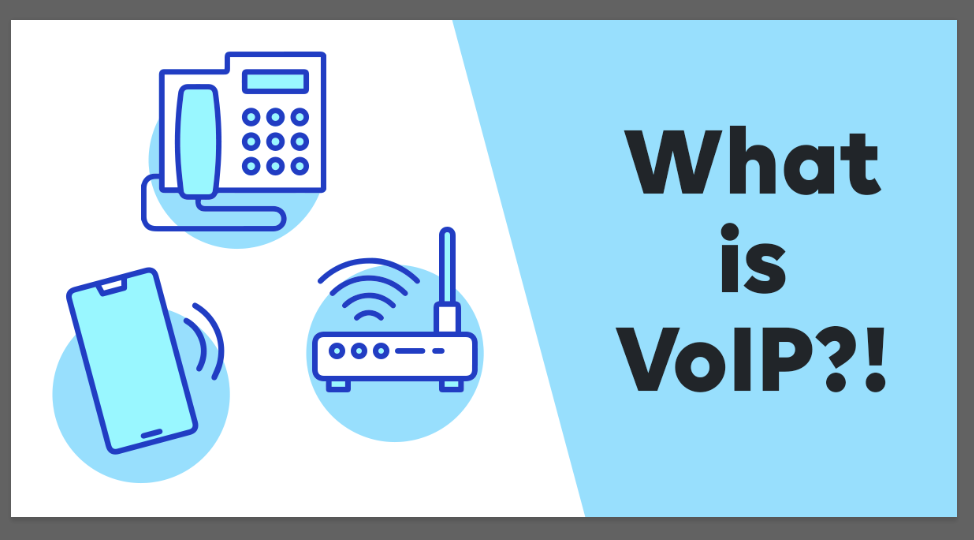What is VOIP?
VoIP stands for Voice over Internet Protocol.
It’s sometimes also called IP telephony, internet telephony, or internet calling. It’s simple, easy to use, provides a host of benefits for any business, and is usually cheaper than using traditional phone lines. If you’re not familiar with VoIP, you may be understandably skeptical as it can sound complicated. In this blog post, we’ll be providing a quick and simple guide to what VoIP is, how it works, and how you can access all the great features VoIP provides for any business.
How does VoIP work?
VoIP allows anyone to make phone calls using an internet connection. If you’ve heard the phrase ‘IP address’, that’s your Internet Protocol address. The ‘Vo’ of VoIP simply means that you’re transmitting voice calls over your IP network.
- Your phone connects to your local network, router or WiFi, a collection of devices connected together at a physical location (like your home or office).
- Your phone or app will need to have an account with a service provider (like Microtalk), who usually gives you a username, password and IP address of their server.
- When you dial a telephone number, your phone tells your VoIP service provider to call that number.
- Your VoIP service establishes the call.
- As you speak, your voice is converted into digital data packets.
- These digital signals are then unpackaged and converted back into the sound you can hear.
As this data reaches its destination almost instantly, and all the technology operating behind the scenes is undetectable, you wouldn’t be able to tell that you weren’t using a traditional telephone! You can still pick up the phone and make calls as normal from a traditional desk phone, softphone or mobile, the only difference is that behind the scenes all calls will now be transmitted via the internet.
What does a VoIP phone look like?
To make VoIP calls, you need a VoIP-capable phone. Software-based VoIP phones often called ‘softphones’, are apps or programs installed on a mobile phone or computer. The interface is designed to replace a traditional phone handset, with a keypad and a screen. VoIP phones can be installed in an office or home, in the same way as traditional desk phones and can be used in the same way as any office phone.
Benefits of VoIP
- Access a range of features that’ll instantly upgrade the image of your business, the call handling of your employees and the experience of your customers. These include call routing, digital receptionist services, call recording, and the ability to receive actionable data insights on call performance, with call logs to enhance customer engagement to gauge the performance of agents.
- Call anyone, anywhere, with great rates. Access to UK numbers, freephone numbers and international numbers means you can get a number of any country in the world and expand your business worldwide.
- Looking to grow your business? A VoIP phone system makes it easy to scale your communications to fit your current needs.
- Hybrid working is here to stay, and a VoIP phone system can be used wherever you choose to work: in the office, at home or on the go via a mobile app.
- Considering all those extra features, you may be surprised to hear that VoIP costs less than traditional analog phone lines.
The Big Switch Off: Moving from PSTN to VoIP
We’ve all become aware, especially recently, of how the internet can keep us connected. Public Switched Telephone Network (PSTN) is the outdated copper wire-based telephone network that was fine many years ago, but it can’t accommodate 21st-century demands. So, VoIP is quickly becoming the definitive choice for consumers and businesses alike and soon everyone in the UK will need to move on from traditional landlines and turn to the internet to provide our phone calls. In 2025, the ‘The Big Switch Off’ will take place, meaning PSTN services for everyone in the UK will be switched off. So, why not future your home and business by accessing the benefits of VoIP today?
How to Switch to VoIP
Your first step is to contact a trustworthy provider, like Microtalk, who can talk you through the setup or switching process. Then, you can decide whether to go with a cloud-based or physical server setup. Finally, choose whether you want a VoIP phone system (like traditional office phones) or a softphone system that uses your office computers or mobile apps. Whatever your decisions, the setup process is quick and simple.
If you are interested in finding out more, why not request a demo with Microtalk?
